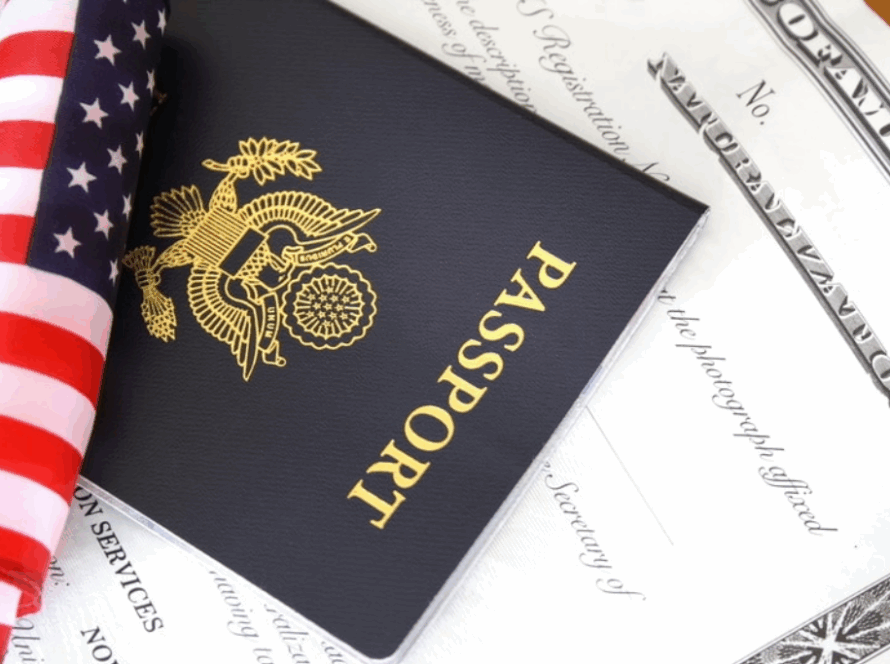Introduction:
The L1 and L2 visas are crucial immigration options for multinational companies looking to transfer employees to the United States. These visa categories allow businesses to send managers, executives, and specialized workers to work at their U.S. offices. In addition, the L2 visa allows family members of L1 visa holders to accompany them during their stay in the U.S.
The L1 visa is designed for intracompany transferees, while the L2 visa is for their spouses and children. Together, these visas provide a great opportunity for both the employee and their family to experience life in the U.S. while contributing to the operations of a global business. In this blog, we’ll dive into the requirements, the application process, and the key advantages of L1 and L2 visas.
L1 Visa: An Overview
The L1 visa is a non-immigrant visa designed for employees of multinational companies who are being transferred to the U.S. to work in managerial, executive, or specialized knowledge roles. There are two types of L1 visas: L1A for executives and managers, and L1B for employees with specialized knowledge.
To qualify for an L1 visa, both the employee and the employer must meet certain eligibility requirements. The employee must have worked for the foreign company for at least one continuous year within the past three years, and the company must have a qualifying relationship with a U.S. business. This relationship could be a parent company, branch, subsidiary, or affiliate.
The L1 visa is a popular choice for international businesses looking to bring top talent to the U.S. because it provides a relatively straightforward path for employees to enter the country without needing a separate job offer from a U.S. employer.
L2 Visa: An Overview
The L2 visa is designed for the spouse and unmarried children (under the age of 21) of L1 visa holders. The L2 visa allows family members to live and work in the U.S. during the duration of the L1 visa holder’s stay.
One of the key benefits of the L2 visa is that spouses of L1 visa holders are eligible to apply for work authorization while in the U.S. This opens up job opportunities for the spouse to support the family financially. Children with L2 visas can also attend school in the U.S., providing them with valuable educational opportunities.
L1 Visa Requirements
To qualify for an L1 visa, both the employer and employee must meet specific criteria.
- Employer Requirements: The employer must be a multinational company with operations both in the U.S. and abroad. The U.S. branch, subsidiary, affiliate, or parent company must have a qualifying relationship with the foreign entity. The employer must also demonstrate that the employee is being transferred to the U.S. to work in an executive, managerial, or specialized knowledge capacity.
- Employee Requirements: The employee must have been employed by the company abroad for at least one continuous year within the past three years in a role that is equivalent to the position they will hold in the U.S. They must also be coming to the U.S. to work in an executive, managerial, or specialized knowledge capacity.
L2 Visa Requirements
The L2 visa is for the immediate family members of the L1 visa holder. The requirements are straightforward but must be adhered to to secure the visa.
- Spouse Requirements: The spouse of the L1 visa holder is eligible for an L2 visa as long as they are legally married to the primary visa holder. They can apply for a work permit once in the U.S.
- Children Requirements: Unmarried children under the age of 21 of the L1 visa holder are eligible for the L2 visa. They are permitted to attend school and live with their parent in the U.S.
L1 Visa Application Process
The L1 visa application process involves several steps, starting with the employer submitting a petition to the United States Citizenship and Immigration Services (USCIS). The employer must provide evidence of the qualifying relationship between the U.S. and foreign business, as well as proof that the employee has worked for the foreign company for the required period.
If the petition is approved, the employee can proceed to apply for the L1 visa at a U.S. consulate in their home country. If granted, the L1 visa holder can then enter the U.S. and start working for the U.S. office of the multinational company.
For L1A (executive/managerial roles) and L1B (specialized knowledge roles), the process remains largely the same. The key difference lies in the documentation required to prove eligibility for each specific role.
L2 Visa Application Process
The application process for an L2 visa is simpler compared to an L1 visa. L2 applicants must apply for their visa through a U.S. consulate in their home country. When the L1 visa holder applies for their visa, they can include the L2 applications for their spouse and children as well.
Once in the U.S., L2 visa holders can apply for a work authorization document (EAD) to seek employment. The EAD is generally approved for a period matching the validity of the L1 visa holder’s stay, allowing spouses to work while their family remains in the U.S.
Key Advantages of L1 & L2 Visas
The L1 and L2 visas offer significant benefits for employees of multinational companies and their families.
L1 Visa Advantages:
- Pathway for Intracompany Transfers: The L1 visa offers an excellent opportunity for companies to transfer key employees to their U.S. offices, supporting business growth and development.
- Dual Intent: The L1 visa allows for dual intent, meaning that employees can apply for a green card (permanent residency) while on an L1 visa. This provides flexibility for those who want to transition to permanent status while working in the U.S.
- Validity and Extensions: The L1 visa is valid for an initial period of one to three years, depending on the visa type, with extensions available. For L1A visa holders, extensions can go up to seven years, while L1B visa holders can extend for up to five years.
- No Maximum Age Limit: Unlike certain other visa categories, there is no age limit for L1 visa applicants, making it possible for experienced professionals to benefit from the program.
L2 Visa Advantages:
- Work Authorization for Spouses: One of the standout features of the L2 visa is that spouses of L1 visa holders can apply for work authorization. This is a significant benefit, as it allows the spouse to seek employment and contribute to the family’s financial support while in the U.S.
- Educational Opportunities for Children: L2 visa holders under the age of 21 can attend school in the U.S., providing them with access to high-quality education.
- Dependents Can Live Together: The L2 visa allows the entire family to live together in the U.S., ensuring a smooth transition for spouses and children who wish to accompany the L1 visa holder.
- Extension of Stay: The duration of the L2 visa is tied to the L1 visa holder’s stay, so family members can stay in the U.S. as long as the L1 visa holder’s employment continues.
Challenges and Considerations
While the L1 and L2 visas offer many advantages, there are some challenges that applicants should be aware of. For the L1 visa, one of the key challenges is the requirement for qualifying employment. The employee must have worked for the foreign company for at least one continuous year within the past three years, which can be difficult for some workers who have been employed at the company for less than the required time.
For L2 visa holders, the work authorization process can take time. Although spouses can apply for a work permit, the process can sometimes take several months, during which time the spouse cannot legally work in the U.S. until the EAD is approved.
Conclusion
The L1 and L2 visa programs provide a valuable opportunity for multinational companies to bring skilled employees to the U.S., along with their families. The L1 visa allows businesses to transfer executives, managers, and specialized workers to the U.S., while the L2 visa allows family members to accompany and support the primary visa holder. The ability for spouses to work in the U.S. and for children to attend school further enhances the value of these visas.
While the application process may be intricate and the requirements specific, the benefits of securing L1 and L2 visas are significant for both businesses and their international employees. Whether you are an employer considering an intra company transfer or an employee looking to advance your career in the U.S., understanding the L1 and L2 visa options can help you make informed decisions and take the necessary steps toward success.
FAQs
- What is the difference between L1A and L1B visas?
The L1A visa is for executives and managers, while the L1B visa is for employees with specialized knowledge in a specific field. - Can L2 visa holders work in the U.S.?
Yes, L2 visa holders can apply for work authorization through the EAD (Employment Authorization Document) process. - How long can an L1 visa holder stay in the U.S.?
An L1A visa is valid for up to seven years, while an L1B visa is valid for up to five years. - Can L1 visa holders apply for permanent residency?
Yes, L1 visa holders can apply for permanent residency (green card) while in the U.S. under the dual intent provision. - Can L2 visa holders study in the U.S.?
Yes, children of L1 visa holders on an L2 visa can attend school in the U.S.


